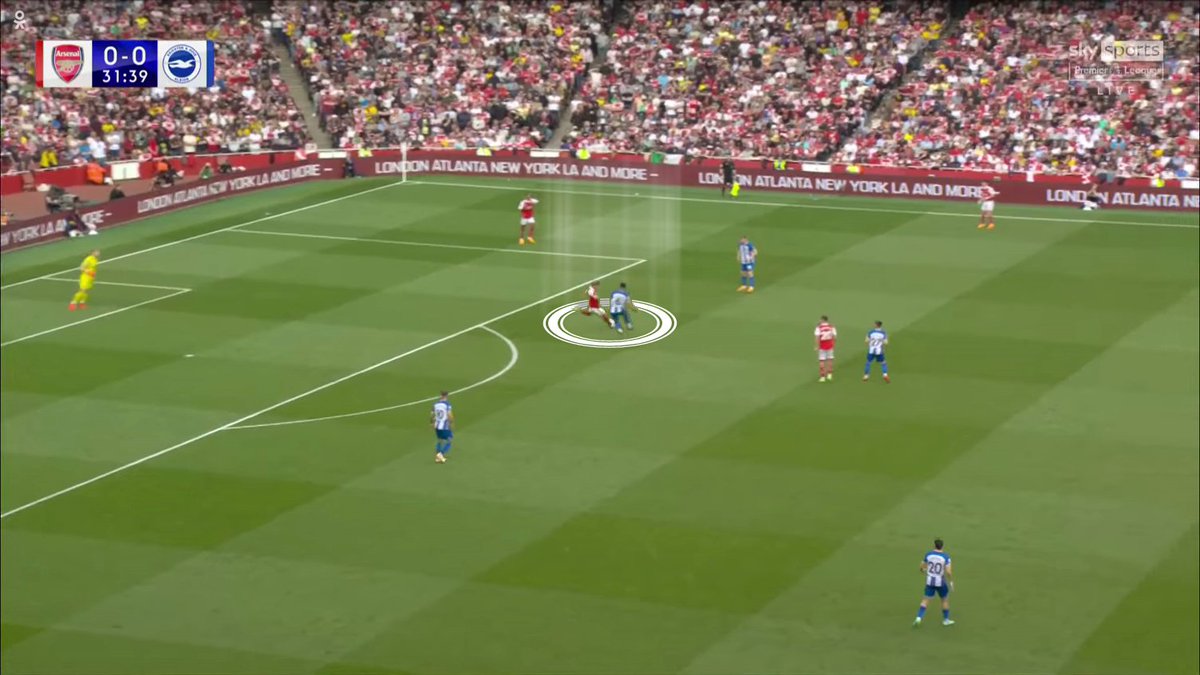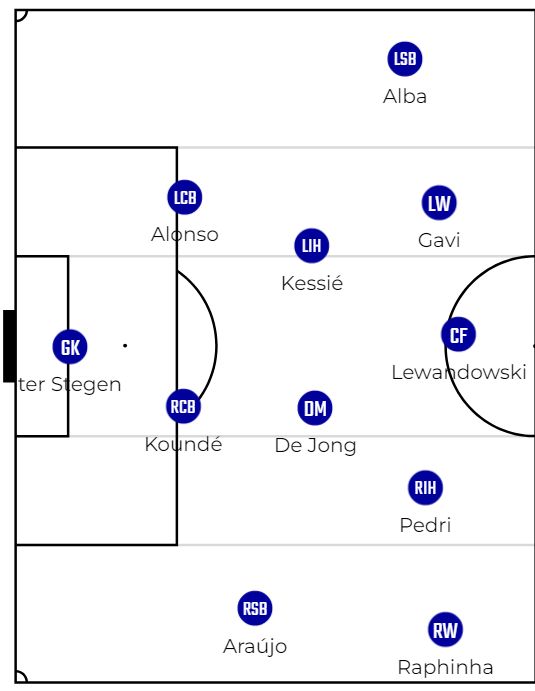Did you know that Brighton also have an out-of-possession phase beside the build-up phase? Jokes aside, quick thread to analyze the quite interesting De Zerbi's OOP strategy against Arsenal.
@11OnceSport
@11OnceSport

It was a very interesting match-up between two teams that master both build-up and pressing. Basically a chess match between De Zerbi and Arteta.
Arsenal (4-3-3): 4+1 build-up with wide FB, Jorginho as the DM. Odegaard and Xhaka would drop deep on the ball side to offer a pass line (sometimes side by side with Jorginho and forming a 4+2). 



Brighton's approach was very aggressive and brave with man-to-man marking leaving only 3 players back.
Ferguson (ST) on Gabriel (LCB)
McAllister (AM) on Kiwior (RCB)
Gilmour (LDM) on Jorginho (DM)
Wingers on FBs
Gross (RDM) on Xhaka (LCM)
Colwill (LCB) on Odegaard (RCM)
Ferguson (ST) on Gabriel (LCB)
McAllister (AM) on Kiwior (RCB)
Gilmour (LDM) on Jorginho (DM)
Wingers on FBs
Gross (RDM) on Xhaka (LCM)
Colwill (LCB) on Odegaard (RCM)

What catches the eye the most is certainly what De Zerbi asked to Colwill, the LCB, who had to follow Odegaard man-to-man everywhere, even when the Norwegian was replacing Jorginho in the DM position or even as as the CB in a temporary back three. 

It's a very risky choice because it effectively leaves a constant 3vs3 at the back, but De Zerbi's idea is to press high and contain Arsenal's build-up to the point where it is extremely difficult to find Saka, Jesus or Trossard.
One thing I found interesting was the narrowness of the pressure. A possible drawback to this is the freedom the FBs enjoyed, but Mitoma and Enciso were very able in running wide straight away to press them by exploiting the touchline as an extra man (also helped by the FBs). 





I wanna conclude with three videos that I find very illustrative.
The 1st concerns a standard Arsenal right-sided pressure situation that forces Arteta's team into a long ball.
The 1st concerns a standard Arsenal right-sided pressure situation that forces Arteta's team into a long ball.
The 2nd is an example of Brighton's pressing on the left-side, with Gross at first pressing Xhaka forcing him to play it back to Kiwior. He then runs at Kiriow overshadowing Xhaka, forcing Arsenal wide where they almost win the ball back.
The last one is my favourite because it perfectly illustrates the hunger with which the Brighton players want to recover the ball. The action starts as a free kick and turns into a ruthless hunt for the ball, everyone chasing their man everywhere.
• • •
Missing some Tweet in this thread? You can try to
force a refresh

 Read on Twitter
Read on Twitter















